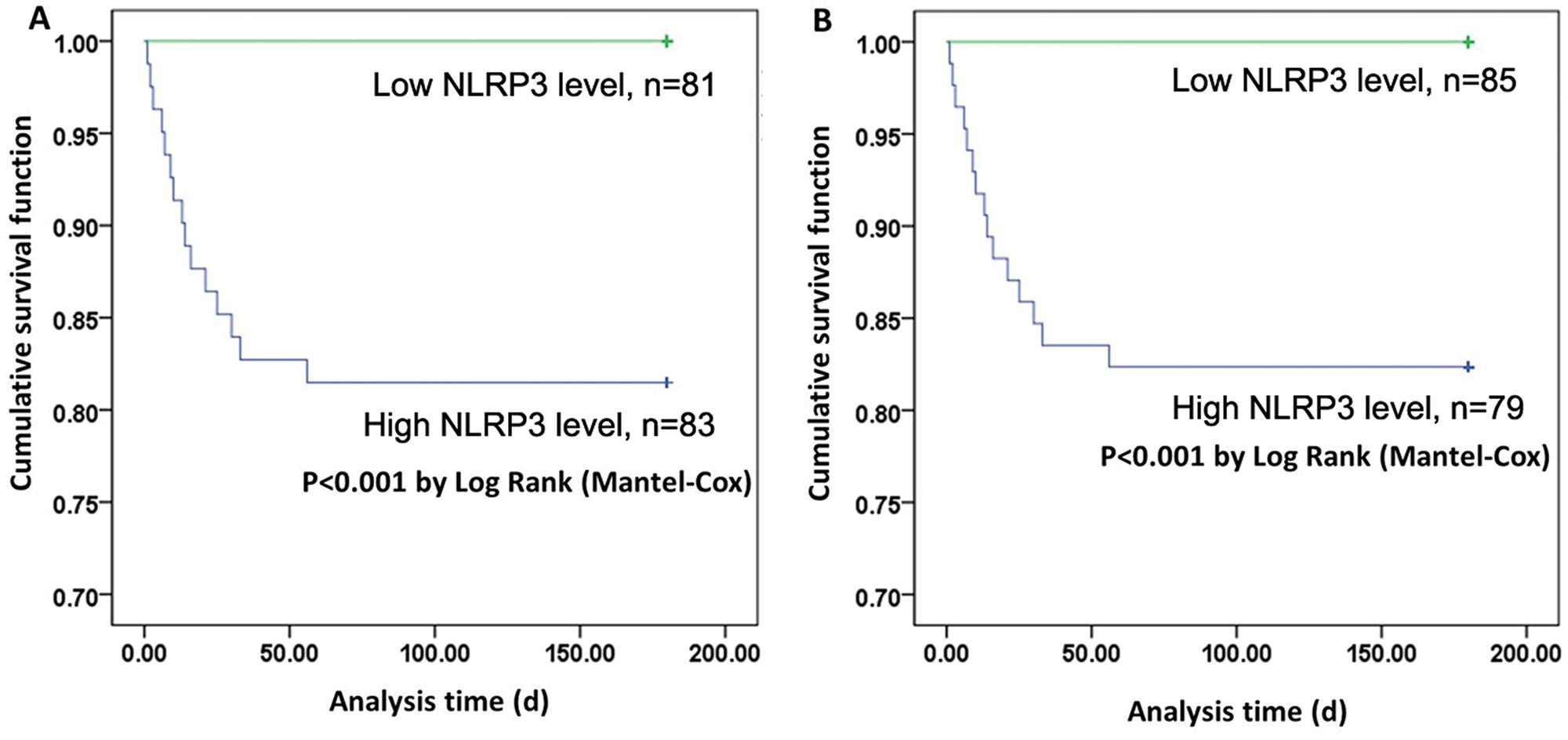OBJECTIVES:
To investigate the relationship between the serum levels of NLRP3 and HMGB-1 and the prognosis of patients with severe blunt abdominal trauma.
METHODS:
In total, 299 patients were included in the current study from July 2014 to December 2015. All patients were divided into the mild/moderate blunt abdominal trauma group and the severe blunt abdominal trauma group according to their injury severity scores. Serum levels of NLRP3 and HMGB-1 were measured upon admission (0 h) and at 12 h, 24 h, 48 h, 72 h and 7 days after admission.
RESULTS:
Compared with the healthy controls, both the mild/moderate and severe blunt abdominal trauma groups had higher serum levels of NLRP3 and HMGB-1 at admission. At all points, the serum levels of NLRP3 and HMGB-1 were significantly higher in the severe group than in the mild/moderate group. The serum levels of both NLRP3 and HMGB-1 were significantly higher in the deceased patients than in the living patients. The Kaplan-Meier curve showed that compared with patients with higher levels of NLRP3 or HMGB-1, those with lower levels had longer survival times. The serum levels of both NLRP3 and HMGB-1 were independent risk factors for 6-month mortality in severe blunt abdominal trauma patients.
CONCLUSION:
The serum levels of NLRP3 and HMGB-1 were significantly elevated in severe blunt abdominal trauma patients, and the serum levels of both NLRP3 and HMGB-1 were correlated with 6-month mortality in severe blunt abdominal trauma patients.
NLRP3; HMGB-1; Severe Blunt Abdominal Trauma



